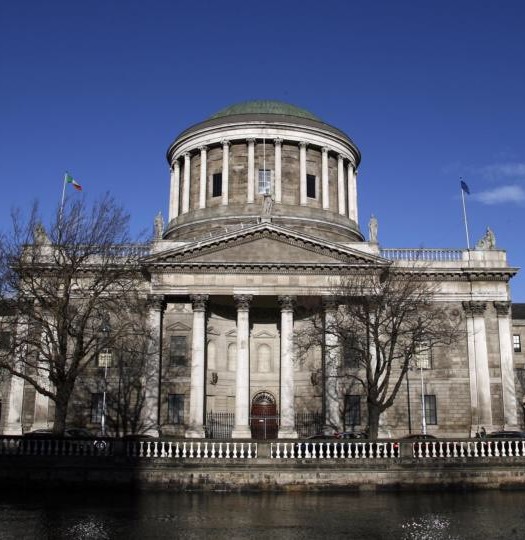The issue of when a security of costs application should be granted was considered by Mr Justice Barrett in the recent case of Euro Safety and Training Services Limited v FAS [2016] IEHC 161.
Section 390 of the Companies Act 1963 provides:-
“Where a limited company is plaintiff in any action or other legal proceeding, any judge having jurisdiction in the matter, may, if it appears by credible testimony that there is reason to believe that the company will be unable to pay the costs of the defendant if successful in his defence, require sufficient security to be given for those costs and may stay all proceedings until the security is given.”
Section 390 was repealed on 1st June, 2015, through a combination of s.4 and Sch.2, Pt.1 of the Act of 2014, and reg. 3 of the Companies Act 2014 (Commencement) Order 2015. Section 52 of the Act of 2014, the replacement provision for s.390, now provides as follows:“Where a company is plaintiff in any action or other legal proceeding, any judge having jurisdiction in the matter, may, if it appears by credible testimony that there is reason to believe that the company will be unable to pay the costs of the defendant if successful in his or her defence, require security to be given for those costs and may stay all proceedings until the security is given.”
Below is an excellent summary of the applicable law given by Mr Justice Barrett. He references the Connaughton and Oltech cases as the leading cases in the jurisdiction which “when read together, provide a quite comprehensive account of the current principles and practices that inform s.390 (and now s.52) applications. Combined into one, stripped of all commentary, and presented in what the court hopes is a coherent sequence, it appears to the court that those principles and practices can be summarised as follows”.
The court did so having heard from counsel on both sides who had presented the court with a substantial body of case law supporting their cases. The judge said “as always, counsel have laboured in the vineyard and plucked a rich crop of case-law from the ever-fruitful vine of precedent to guide the court in reaching its decision“.
It was the cases of Connaughton Road Construction Ltd v. Laing O’Rourke Ireland Ltd [2009] IEHC 7 and Oltech (Systems) Limited v. Olivetti UK Limited [2012] IEHC 512 that the court considered as leading.
The following extract of the judgment is very helpful to practitioners and sets out the guidelines that the court will adopt in security for costs applications.
“Part 7: Connaughton and Oltech SummarisedA. Overview.
24. The court has already indicated above that it considers that the decisions in Connaughton and Oltech, when read together, provide a quite comprehensive account of the current principles and practices that inform s.390 (and now s.52) applications. Combined into one, stripped of all commentary, and presented in what the court hopes is a coherent sequence, it appears to the court that those principles and practices can be summarised as follows.
B. Connaughton and Oltech Summarised.25. 1. GENERAL APPROACH
2. BASIC REQUIREMENTS3. SPECIAL CIRCUMSTANCES
i. Generalii. Alleged Wrong Engendered
Inability to meet Costs?
iii. Delay
iv. Important point of law
v. Adequately funded as co-plaintiff
vi. Constitution
vii. Point of fact of national importance
viii. Counterclaimants
4. QUANTUM
5. COMPANY WITH NO SIGNIFICANT NET ASSETS
BEFORE EVENTS IN ISSUE
6. AMOUNT OF SECURITY1. GENERAL APPROACH
(1) To obtain security for costs, an initial onus rests on the moving party to establish (i) a prima facie defence to the plaintiff’s claim, and (ii) that the plaintiff will not be able to pay the moving party’s costs if the moving party be successful. [Connaughton, para.2.1].
(2) If (1)(i) and (1)(ii) are established, security ought to be ordered unless it can be shown there are special circumstances in the case which ought to cause the court to exercise its discretion not to make such order. [Connaughton, para.2.1].
(3) It is no part of the task of a court on an application for security for costs to take a view as to who ought to win at trial. No assessment of liability ought to be made, much less any decision beyond stating whether there is a reasonable prospect of a defence succeeding at trial. [Oltech, paras.4-5].
(4) The task for the court, rather than to attempt to decide the case, is to apply the tests mandated by case-law. [Oltech, para.5].
(5) Section 390 (now s.52) expressly envisions that an impecunious plaintiff company may be required to give security for costs and that in many cases this may mean the end of an action, unless someone other than the company is prepared to put up the security. [Oltech, para.7].
(6) To refrain from granting an order for security, save in certain exceptional (and allowed) circumstances, just because it might stifle the plaintiff company’s actions would render the section nugatory. [Oltech, para.7].
2. BASIC REQUIREMENTS
(7) There are two basic requirements to meet before the discretion of the court to order security for costs may be invoked: (i) the defendant must show it has a reasonably sustainable, i.e.prima facie, defence. Second, a defendant must show the plaintiff company is either (i) insolvent, or (ii) so financially challenged that it will not be able to pay the defendant’s costs, if the defendant is successful. [Oltech, para.8].
(8) The reference to a prima facie defence does not just mean a barely arguable defence, since experience suggests that there is little that cannot be argued. [Oltech, para.8].
(9) A defendant seeking to establish a prima facie defence based on fact must objectively demonstrate the existence of evidence upon which he will rely to establish those facts. Mere assertion will not suffice. [Oltech, para.9].
(10) If such objective evidence as is referred to in (9) is adduced, the defendant is entitled to have the court determine whether or not it has established a prima facie defence (on the assumption such evidence will be accepted at trial). [Oltech, para.9].
(11) A defendant such as is referred to in (9) and (10) must establish an arguable legal basis for the inferences/conclusions which it submits the court may arrive at based on such evidence. [Oltech, para.9].
(12) Section 390 (now s.52) contains no reference to the establishment of a prima facie defence. However, it requires a company to provide security where it would be unable to pay the costs of a successful defendant. It is therefore relevant to consider whether or not a defendant has a prima facie defence. Unless the defendant has a prima facie defence, the purpose of s.390 (s.52) would not come into play. [Oltech, para.9].
(13) A reasonably sustainable defence may be one in fact or in law. If in law, then even an affidavit is not required on an application for security for costs. [Oltech, para.10].
(14) The essence of the order for security for costs (or not) is to advance the ends of justice, not to hinder them. It is for a court on such an application to consider, and to balance, the interests of the plaintiff company and those of the defendant in a fair and proportionate manner. [Oltech, para.16].
3. SPECIAL CIRCUMSTANCES
i. General
(15) There is a multitude of special circumstances identified in case-law as allowing the court in its discretion to decline to make an order for security for costs. The terms of this discretion are wide and cannot be regarded as finally settled. [Oltech, para.15].
(16) The burden of proof of special factors rests on the plaintiff company once the defendant has shown a prima facie defence. [Oltech, para.16].
(17) Special circumstances exist in order to enable cases to proceed even where a defence is reasonably open despite the inability to pay such a costs order by the plaintiff. This is because the justice of a case may require that notwithstanding that the defendant has a reasonable defence and that the plaintiff company is financially challenged the case ought to proceed. [Oltech, para.16].
(18) The requirement that special circumstances be established by a plaintiff company, does not have to be complied with in any particular way. [Connaughton, para.4.11].
ii. Alleged Wrong Engendered Inability to meet Costs?
(19) Where it is asserted that the plaintiff’s inability to discharge the defendant’s costs of successfully defending the action flow from the wrong allegedly committed by same, (a) the onus of establishing this rests on the plaintiff, and (b) the obligation of the plaintiff in such circumstances is to establish a prima facie case that its inability to pay the defendant’s costs of the defendant, in the event the defendant were successful, stems from the wrongdoing alleged in the overall proceedings. [Connaughton, para.2.3].
(20) For a plaintiff to be correct that his inability to pay stems from the wrongdoing asserted, four propositions, it seems, must necessarily be true: (i) that there was an actionable wrong on the part of the defendant; (ii) that there is a causal connection between the actionable wrongdoing and one or more practical consequences for the plaintiff; (iii) that the consequence(s) referred to in (ii) have given rise to some level of loss in the hands of the plaintiff which is recoverable as a matter of law; and (iv) that the loss concerned is sufficient to make a difference between the plaintiff being in a position to meet the costs of the defendant in the event that the defendant should succeed. [Connaughton, para. 3.4]. Each of these steps falls to be established on a prima facie basis only. [Connaughton, para.3.5].
(21) As part of the overall question of assessing whether it has been shown, on a prima facie basis, that a plaintiff’s inability to pay potential costs is due to the wrongdoing asserted, the court must look at all the circumstances asserted on behalf of the parties. [Connaughton, para.3.10].
(22) Despite (18), when it comes to this form of special circumstance, i.e. that a plaintiff’s inability to pay potential costs is due to the wrongdoing asserted, in normal circumstances one would expect that a plaintiff company would put before the court (i) some evidence of its current financial position, (ii) some account of its financial position prior to the incident giving rise to the alleged wrongdoing, and (iii) some evidence to suggest that all, or a sufficient portion of, the difference in position can be attributed to the wrongful actions of the defendant. [Connaughton, para.4.11].
(23) If a plaintiff company seeks, without presenting approximate accounts, to assert that all of its current financial difficulties are attributable to a defendant’s alleged wrongdoing (and thus that there is, in effect, an equivalence between the prima facie scale of the alleged wrongdoing and the said financial difficulties), it would be necessary (i) in addition to showing that the plaintiff company would have made profits in the first place, to demonstrate (ii) a prima facie basis for assuming that no other causes could be said to have generated the current inability to pay costs. [Connaughton, para.4.14].
iii. Delay
(24) An order for security for costs may be refused where there has been delay in bringing the application for such order. [Oltech, para.19].
(25) When it comes to instances of alleged delay: (i) any court considering delay as grounds for refusing an order for security for costs would need to analyse (a) the nature of the delay in light of the means of knowledge of the moving party (as to what that party knew or ought reasonably to have known), and (b) assess its impact on the course of the case in order to decide whether the order ought to be refused; (ii) the reason for the delay must be important; (iii) delay as a reason for refusing to make an order can be very important where the plaintiff company has acted to its detriment in incurring a level of costs that it would not have incurred had it known it would have been required to provide security. [Oltech, para.19].
iv. Important point of law
(26) An order for security for costs may be refused where a point of law arises for decision in the case that is so important that the process of the case should not be interrupted. [Oltech, para.20].
(27) The point of law in issue must not simply be any ordinary point of law that might be argued before the courts on a month-to-month basis; it must transcend the interests of the parties and require as a matter of public interest that it be decided for the benefit of the community as a whole. [Oltech, para.20].
v. Adequately funded as co-plaintiff
(28) Where there is a corporation as plaintiff and an individual as co-plaintiff, both are making the same factual case and the corporation is insolvent but the natural person is adequately funded to meet an eventual costs order against her or him, the order may be refused because the defendant, if successful, is not going to be impeded in recovering costs. [Oltech, para.21].
(29) The same point may apply where (a) where two corporations are co-plaintiffs, and one is adequately resourced and the other not, and (b) where there are two plaintiffs in similar circumstances, one within the European Union and the other not. [Oltech, para.21].
vi. Constitution
(30) The constitutional (though not absolute) entitlement of citizens to access to the courts applies to defendants/respondents as well as plaintiffs. A defendant ought not to be forced to forego (though one would imagine that generally a defendant would be delighted to forego) defending an action against which there is a stateable defence on the merits, out of the fear or being bankrupted by having to incur substantial costs which will be irrecoverable from an insolvent plaintiff. [Oltech, para.21].
vii. Point of fact of national importance
(31) A point of fact of national importance can arise in litigation that is inescapably central to a case and which will settle a concern of great public moment. Such an issue will arise rarely. Litigation between private entities is by nature compensatory or restorative. It is only in the most extreme circumstances that any fact in contention between litigants can keenly affect the public interest. Where such does present, this can be a special factor in refusing to order security for costs. [Oltech, para.22]. [The court notes in passing the somewhat more nuanced approach adopted in this regard by the court in Dublin Waterworld, at para.34 of its judgment, quoted elsewhere above].
viii. Counterclaimants
(32) A defendant may also be a counterclaimant on a subject-matter that identifies as the plaintiff’s defence the same issues that the plaintiff company seeks to plead against the defendant. This could bring about the undesirable situation where an impecunious plaintiff could have its claim frustrated by the granting of an order for security for costs, yet would fall to defend the counterclaim on the very facts in issue in the claim. In such instances, the order for security may be granted on the giving of an undertaking that the defendant’s counterclaim will not be pursued. [Oltech, para.23]. A further undertaking may be sought that the defendant will consent to dismissal of its counterclaim, should the plaintiff fail to lodge the sum ordered by way of security. [Oltech, para.27]. Of course, if the trial of a counterclaim would be substantially unaffected by the absence of a plaintiff’s allegation against the defendant, there is no reason for the counterclaim not to proceed. [Oltech, para.25].
4. QUANTUM
(33) It is not correct that a court should have no regard to questions of quantum in a s.52 (s.390) application. A plaintiff must at least establish a prima facie case that the quantum of damages which he might obtain in the event that he is successful is of an order of magnitude sufficient to reverse the current financial position whereby the plaintiff company would be unable to pay the defendant’s costs in the event that the defendant was successful. [Connaughton, para.3.6].
(34) It does not flow from (33) that it is necessary for a plaintiff to establish a precise quantum of damages which it might recover in the event of it being successful. But it must show, at least on a prima facie basis, that the losses allegedly attributable to the defendant’s wrongdoing are sufficiently large to justify a finding that those losses can explain, by themselves, the plaintiff’s inability to pay costs. [Connaughton, para.3.6].
5. COMPANY WITH NO SIGNIFICANT NET ASSETS BEFORE EVENTS IN ISSUE
(35) When it comes to a plaintiff company which had no significant net assets prior to the events which gave rise to the proceedings, there are no special considerations to be given to such a company one way or the other. [Connaughton, para.3.8].
(36) Unless such a plaintiff company (as referred to in (35)) can establish, on a prima facie basis that, were it not for the wrongdoing asserted, (i) it not only would not have lost the money, but (ii) would have made sufficient profits so as to be in funds sufficient to pay the likely costs of a successful defendant, then it will have been unable to show that its inability to pay costs is due to the wrongdoing at the heart of the proceedings. [Connaughton, paras. 3.8–3.9].
6. AMOUNT OF SECURITY
(37) If an order for security for costs is to be made, it must be for the full sum of the estimated costs: the court has no discretion to award merely a percentage. [Oltech, para.13].
(38) The courts have a discretion as to the awarding of costs; the lure of over-proofing can be factored into the court’s estimation of costs (and hence the level of order for security made). [Oltech, para.13]”.
I the case at hand where the Defendant had sought a security of costs order against the Pplaintiff the court found that Euro Safety had:-
“(i) established on a prima facie basis that its inability to discharge FÁS’ costs of successfully defending these proceedings (if FÁS so succeeds) flows from the wrong allegedly committed by FÁS; and
(ii) made detailed and serious allegations of misfeasance in public office against FÁS (all of which allegations are denied), rendering this a case where, for the reasons stated above, an airing of, and adjudication upon, those detailed allegations is a matter of public moment and interest; and
(2) to a lesser but still significant extent, the notable delay that FÁS has manifested in bringing the present application”.The court declined to grant the order for security for costs sought of it by FÁS.
The judgment is here












